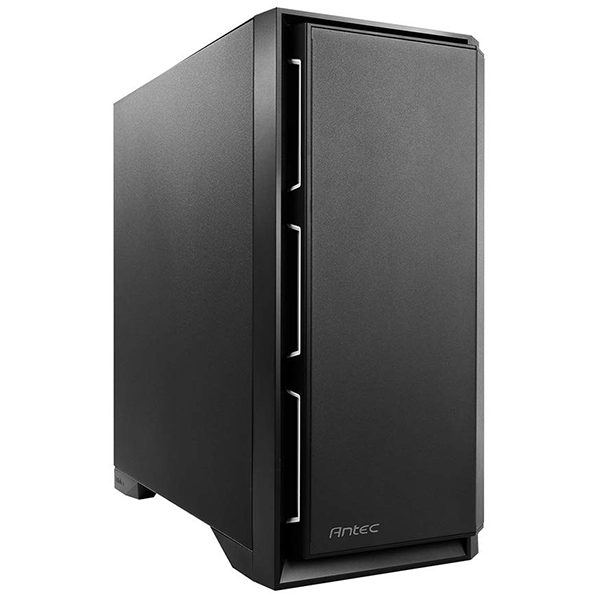Cooler Master Silencio S400 Micro ATX Case Review: Quietly Affordable
Why you can trust Tom's Hardware
Benchmark Results and Conclusion
We tested the Cooler Master Silencio S400 with our Intel Core i9-7900X test platform in two configurations: fans in default placement and both fans mounted in the front of the chassis. For comparison, we brought in the Antec P101 Silent, Corsair's Carbide 678C, and the be quiet! Silent Base 601, all with similar sizes and feature sets.
In default configuration, the single 120mm intake struggled to provide enough airflow to keep the components in our test system cool. CPU temperatures peaked at 66 degrees Celsius over ambient. With the rear exhaust fan moved to the front, processor temps dropped to 63 degrees Celsius over ambient, a tie with Corsair's Carbide 678C for last place. GPU temperatures leveled off at 57 degrees Celsius over the ambient room temperature. Moving the rear exhaust to the front resulted in a sizeable drop in GPU temps, as well.
As always, sound pressure level readings were taken with two off-the-shelf dB meters from two different angles. With the fan speed set at the maximum 1,400 rpm, our test system registered just 28.5dBA at idle. With the test system under load, sound output reached a maximum of just 30.1dBA, the best results of the test group. Oddly enough, running the tests again with the exhaust fan moved to the front produced almost identical results. This no doubt is due to the design of the chassis and abundance of sound damping material.
Cooling efficiency and noise levels are both important to enthusiast when determining the base value of a chassis. Normally higher temps would be a negative, but the ability to achieve lower temperatures simply by moving the rear fan to the front (without a negative impact on sound output) alleviates the issue.
Bottom Line
If you value silence above all else and are willing to sacrifice cooling performance (or able to do a simple fan swap), the Cooler Master Silencio S400 should definitely be at the top of your case consideration list. The chassis' budget-friendly $90 (£80) asking price makes it easier to forget drawbacks such as lack of USB 3.1 Type-C port, not to mention leaving money on the table for an extra intake fan if you want to drop your temperatures further.
Image Credits: Tom's Hardware
MORE: Best Cases
Get Tom's Hardware's best news and in-depth reviews, straight to your inbox.
MORE: All Case Content
Current page: Benchmark Results and Conclusion
Prev Page Hardware Installation and Test ConfigurationSteven Lynch is a contributor for Tom’s Hardware, primarily covering case reviews and news.
-
epicga Will be fan swap (moving the rear fan to the front of the chassis without adding third fan) a good option (lowering temperatures and maintaining low noise levels) also with good air (non liquid) CPU cooler?Reply





